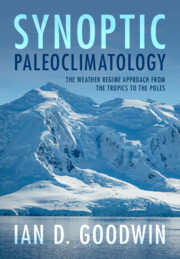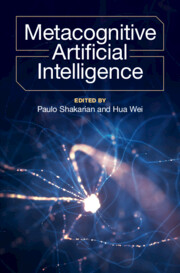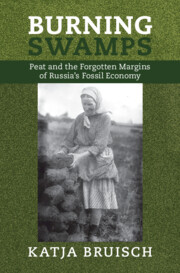Refine listing
Actions for selected content:
1294859 results in Books

AI and Image
- Critical Perspectives on the Application of Technology on Art and Cultural Heritage
-
- Published online:
- 10 September 2025
- Print publication:
- 09 October 2025
-
- Element
-
- You have access
- Open access
- HTML
- Export citation

Russia and the Syrian Conflict
- Moscow's Domestic, Regional and Strategic Interests
-
- Published by:
- Gerlach Press
- Published online:
- 09 September 2025
- Print publication:
- 30 July 2016

The Late Antique World of Early Islam
- Muslims among Christians and Jews in the East Mediterranean
-
- Published by:
- Gerlach Press
- Published online:
- 09 September 2025
- Print publication:
- 31 January 2021

Synoptic Paleoclimatology
- The Weather Regime Approach from the Tropics to the Poles
-
- Published online:
- 09 September 2025
- Print publication:
- 25 September 2025

Interpreting Identities
- Dimensions of Power, Presence, and Belonging
-
- Published by:
- Bristol University Press
- Published online:
- 09 September 2025
- Print publication:
- 22 April 2025

Turkish-Saudi Relations
- Cooperation and Competition in the Middle East
-
- Published by:
- Gerlach Press
- Published online:
- 09 September 2025
- Print publication:
- 31 December 2020

The Trucial Coast Political Reports 1958-1963
- The Slow Progress from Pearls to Oil
-
- Published by:
- Gerlach Press
- Published online:
- 09 September 2025
- Print publication:
- 31 May 2021

Reckoning with Law in Excess
- Mobilization, Confrontation, Refusal
-
- Published online:
- 09 September 2025
- Print publication:
- 25 September 2025
-
- Book
-
- You have access
- Open access
- Export citation

Democracy's Double Helix
- Participation, Equality and Revolution in Early Modern Europe
-
- Published online:
- 09 September 2025
- Print publication:
- 14 August 2025

Horizontal Development
- Shifting Power and Privilege in Aid
-
- Published by:
- Bristol University Press
- Published online:
- 09 September 2025
- Print publication:
- 26 June 2025

The Silent Revolution
- The Arab Spring and the Gulf States
-
- Published by:
- Gerlach Press
- Published online:
- 09 September 2025
- Print publication:
- 30 April 2014

The Politics of Food Security
- Asian and Middle Eastern Strategies
-
- Published by:
- Gerlach Press
- Published online:
- 09 September 2025
- Print publication:
- 30 September 2014

Girls, Power and International Development
- Agency and Activism in the Global North and South
-
- Published by:
- Bristol University Press
- Published online:
- 09 September 2025
- Print publication:
- 28 May 2025

Syntax and Semantics of Petri Nets
-
- Published online:
- 09 September 2025
- Print publication:
- 25 September 2025

Lean as a Healthcare Improvement Approach
-
- Published online:
- 09 September 2025
- Print publication:
- 02 October 2025
-
- Element
-
- You have access
- Open access
- HTML
- Export citation

Metacognitive Artificial Intelligence
-
- Published online:
- 08 September 2025
- Print publication:
- 25 September 2025

Advancing Health Rights and Tackling Inequalities
- Interrogating Community Development and Participatory Praxis
-
- Published by:
- Bristol University Press
- Published online:
- 06 September 2025
- Print publication:
- 21 May 2025

Embracing the Unknown
- Experiences of Studying for a PhD in the Social Sciences
-
- Published by:
- Bristol University Press
- Published online:
- 06 September 2025
- Print publication:
- 18 June 2025

1000 Platforms
- Ensembles as Ontological Experiments
-
- Published by:
- Bristol University Press
- Published online:
- 06 September 2025
- Print publication:
- 28 April 2025

Burning Swamps
- Peat and the Forgotten Margins of Russia's Fossil Economy
-
- Published online:
- 06 September 2025
- Print publication:
- 25 September 2025
